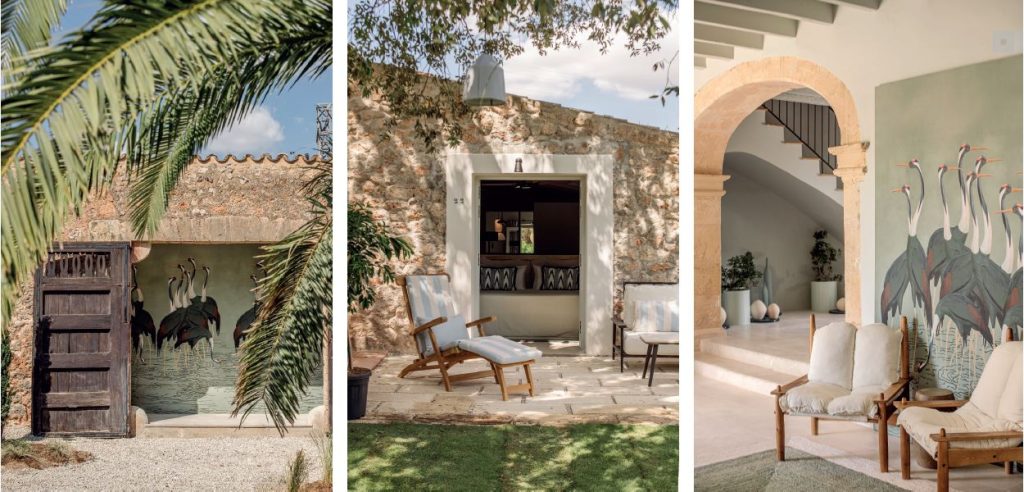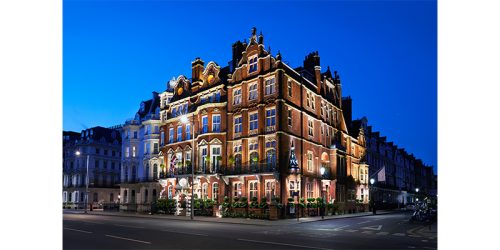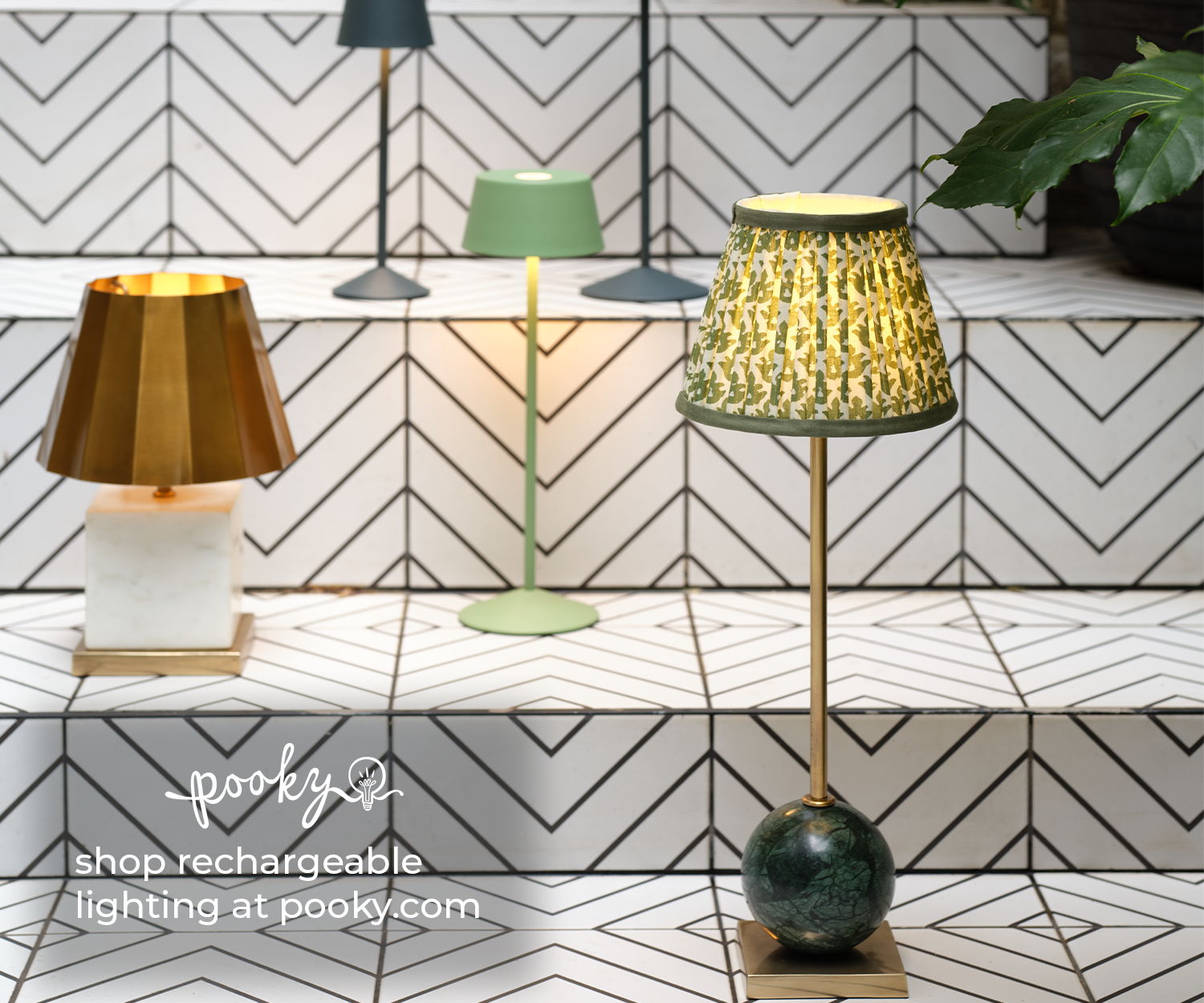Son Xotano, Mallorca, Spain
In the rural centre of Mallorca, Annua Hotels’ latest opening swaps spectacle for stillness, where easy days, simple pleasures and centuries-old heritage set the pace.
For all of Mallorca’s buzz, there’s also a slower side – one that we all hear about but seldom experience since the island became the boom of the Balearics. Even if the island is a little more crowded these days, it remains beautiful – the cobbled streets of Palma’s Old Town never fail to charm, nor the sun-soaked shores of Port de Sóller or the mountainous terrain of hill town Deià. But for true R&R, it’s the heart of the island where the pace rewinds, more specifically at Mallorca’s latest debutante, Son Xotano.
Just 25 minutes from Palma Airport, the bustle slips away in favour of rural Mediterranean landscapes dotted with olive groves and clusters of cacti. Winding down a dusty side road, Son Xotano reveals itself – a 12th-century estate with vineyards for neighbours and the faint outline of the Serra de Tramuntana as its backdrop. The welcome is as idyllic as you’d hope: a perfectly poised possessió framed by carob, almond, and palm trees, its stucco walls warmed in buttery tones complete with dusky blue shutters.
With 75 hectares of countryside to its name, nature forms the hotel’s soundtrack. Birdsong and crickets bring the melody, while the trickle of water features tucked between mounds of lavender and rosemary waft sweet, woody scents on the walk towards check-in. The only interruption is the distant lull of laidback laughter and low-key conversation from guests already settled into the Son Xotano mood – though it’s forgiven as a gentle teaser of what’s to come.
Despite sounding effortless, this kind of atmosphere is hard to pull off – more commonly found in old school family-run boutiques that know exactly who they are, than fresh hotels in their first few weeks of opening. But for homegrown hotel group Annua, crafting unstuffy luxury and genuine moments that favour presence over performance is part of the repertoire.
Set up in 2021 by brothers Iñaki and Álvaro Sasiambarrena, Annua began as an outlet to create soulful retreats inspired by the Mediterranean’s slower rhythm – a mindset more than a location – where they, and others, could escape the stresses of daily life. From Morvedra Nou, a converted 17th-century country house, and Amagatay, a reimagined 19th-century agricultural estate in Menorca, to César Lanzarote, a volcanic retreat set in the former home of César Manrique’s family, each hotel balances small-scale, heritage and simplicity with a strong sense of design.
As Creative Director, Álvaro leads each project, assembling a design team in tune with the Annua vision. For Son Xotano, he brought in Mallorca-based architects ClapésPizà. Meeting with founders Adrià and Joan on a design tour, it’s clear they were a perfect fit – their specialty being adapting traditional Mediterranean architecture for modern life. Their passion for Mallorcan heritage is evident, as they talk vividly about the traits of different architectural styles across the island by location and eras, pointing out the differences while flipping through an enormous architectural reference book.
They tell me the estate itself dates back to the Islamic period and has lived many lives since – a winery, a livestock farm, even most recently as a fitness bootcamp. The brief Álvaro handed ClapésPizà was to preserve the layered character of the centuries-old estate while adapting it to the needs of contemporary travellers. Set to work they repaired original stone walls, reinforced weakened structures, and restored historical features like the grand 17th-century sandstone arches that now frame the lobby.
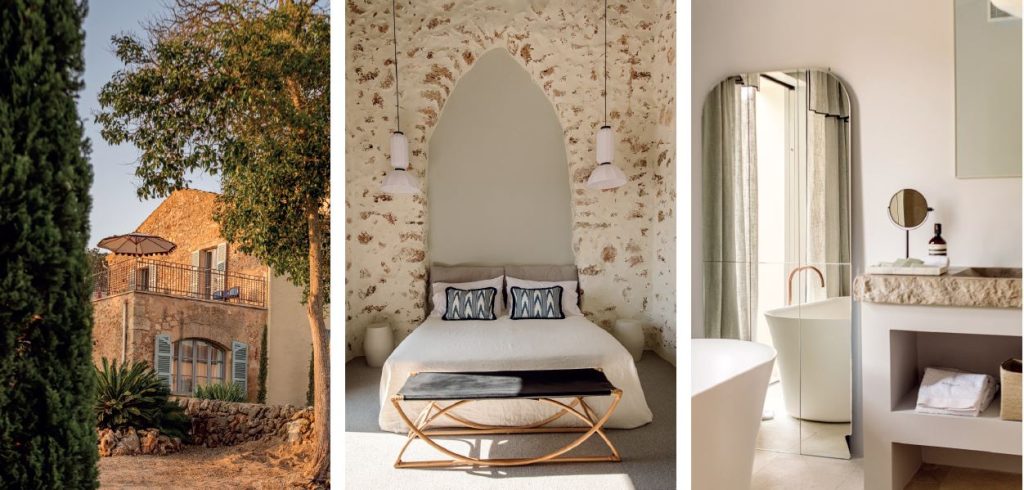
Designers ClapésPizà have preserved the layered character of the centuries-old estate while adapting it to the needs of contemporary travellers.
What they added blends in so subtly it feels as though it’s always been there – which is exactly how the duo like to work, their interventions thoughtful and quiet. Air conditioning is integrated behind the walls with only slimline vents in view rather than mounted out front, keeping the look clean and the usual hum at bay. Bathrooms, lighting and acoustics have all been completely reconfigured to suit new, intuitive layouts for the 22 guestrooms and suites. Natural materials such as natural sandstone, limestone, and solid pine wood form the base palette. Recovered tiles have been repurposed, and floors are lined in locally sourced thick stone. And in a nod to tradition, artisanal counters have been handmade with Mallorcan mud and finished in limewash, grounding the new layouts within the language of the original structure.
Annua’s commitment to sustainability begins with the revival of cultural heritage, something ClapésPizà embraced through the careful reinstatement of the estate’s historic infrastructure. The traditional rainwater collection system has been restored, reusing cisterns and dry-stone structures that help thermal regulation, as well as landscape irrigation for the perfectly manicured lawns and newly planted native flora and vegetation true to the agricultural character of the farm. Energy demand has also been significantly reduced through cross ventilation and natural insulation – proving that after all these years, old is still gold.
Interiors were handed to long-time Annua collaborator Virginia Nieto, whose design language leans towards contemporary calm. Her approach here is tactile and island-inspired, drawing on materials like linen, pine, brushed metal and Mallorcan clay. Like her designs at the other Annua properties, the concept goes big on one colour with pops of bold striped furnishings. Here, the dusky shade of blue from the property’s original shutters stood out as a point of interest, as across the island they’re often seen in a vivid green. Wall coverings feature large herons mid-stride or fish gliding through rippling water, bringing bold moments to an otherwise minimalistic aesthetic. The result is quiet and calming, allowing guests to slip easily into the slow of Son Xotano.
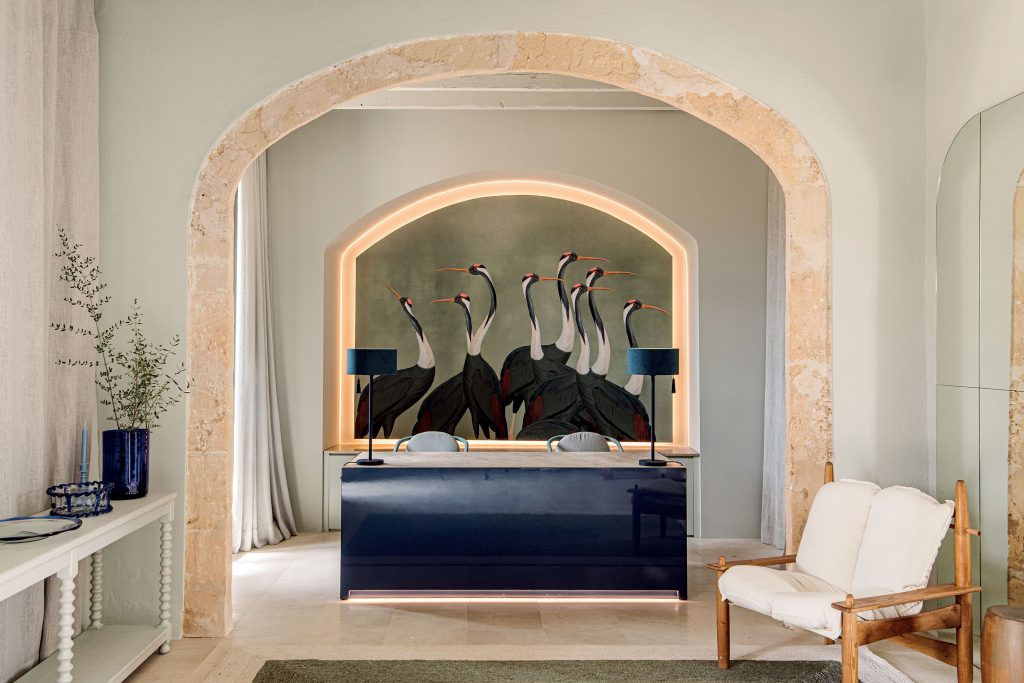
Interiors were handed to long-time Annua collaborator Virginia Nieto, whose design language leans towards contemporary calm.
The 22 rooms and suites come in all shapes, sizes and character, though each is set up so there’s not an ounce of guilt for spending more time in them, than out. Some sit cosily beneath beamed ceilings in the loft; others are framed by soaring stone walls or feature wall coverings behind the headboard, printed with soft illustrations of island flora and the occasional sweet little bird. All follow a similar rhythm for lazing and lounging: cloud-soft beds dressed in custom washed linen bedding in neutral tones by Bassols, sculptural lights floating above chunky pine bedside tables, and ikat textiles in the islands’ iconic roba de llengües pattern. Custom furnishings designed by Nieto’s studio set the mood, while cushy chaise lounges and sculptural side tables positioned for daydreaming and infinite window gazing. A majority of rooms come with some form of private outdoor space, whether a sundowner terrace, spacious garden, or cosy balconette, to fling the doors open in the morning whilst lingering with your morning coffee.
If anything can tempt you from your room, the pool is the hotel’s centre of gravity – long and low, with uninterrupted views, framed by linen-draped cabanas and double daybeds shaded by scalloped parasols. Spilling out from the bar and breakfast terrace, it naturally the social heart of the estate, where guests meander throughout most of the day. As dusk falls, there’s slow yoga on the open-air deck beneath the pines, followed by dinner underneath romantic vine draped pergolas.
Award-winning chef José María Borrás brings youthful energy and a playful touch to the menu, guided by a ‘zero-kilometre’ ethos with ingredients sourced from nearby farms or the estate itself wherever possible. Easy-going daytime dishes like smash burgers and poke bowls, are followed by more elevated plates in the evening such as lobster tagliatelle and pan-seared Mallorcan Turbot.
Though still new, Son Xotano isn’t sitting as still as it seems. Next year, the characterful wine cellar in the main house, will open as a fine-dining grill restaurant where guests can dine beneath vaulted ceilings carved into centuries-old stone. Joining the restaurant, a lounge bar is set to open above the old olive oil store, and plans are in motion for four private apartments where land is currently being made use of as an olive tree nursery, that can be later transplanted across the estate when development starts.
Despite the slow ethos, there is no slowing down for Annua’s portfolio with two more hotels on the horizon. Numa Comporta will be a hotel with private residences nestled between unspoilt beaches and sand dunes in Portugal’s Alentejo region. And Son Margalida, will soon be Son Xotano’s coastal counterpart in Mallorca, located in the steeped cove town of Banyalbufar, again away from any of the familiar tourist crowds.
There, the three buildings that make up the future hotel tumble toward the sea in typical Banyalbufar fashion. But the remote access, steep terrain and logistical hurdles have made construction slower than expected – so much so that Son Xotano was found, designed, and completed while Son Margalida was still very much mid-build. Albeit a more complex project, the vision holds steady, set to bring 33 rooms, an infinity pool that merges into the horizon, a spa that spills out onto gardens and terraces, as well as public spaces that feel as welcoming to locals as they do to guests.
Meanwhile, back at Son Xotano, days continue to melt into a hazy loop of lounging in the sun, frolicking by the pool, and being wined and dined exceptionally well. It’s hard to imagine needing anything more. But if this is what patience looks like, Annua’s next hotels are probably worth the wait.






